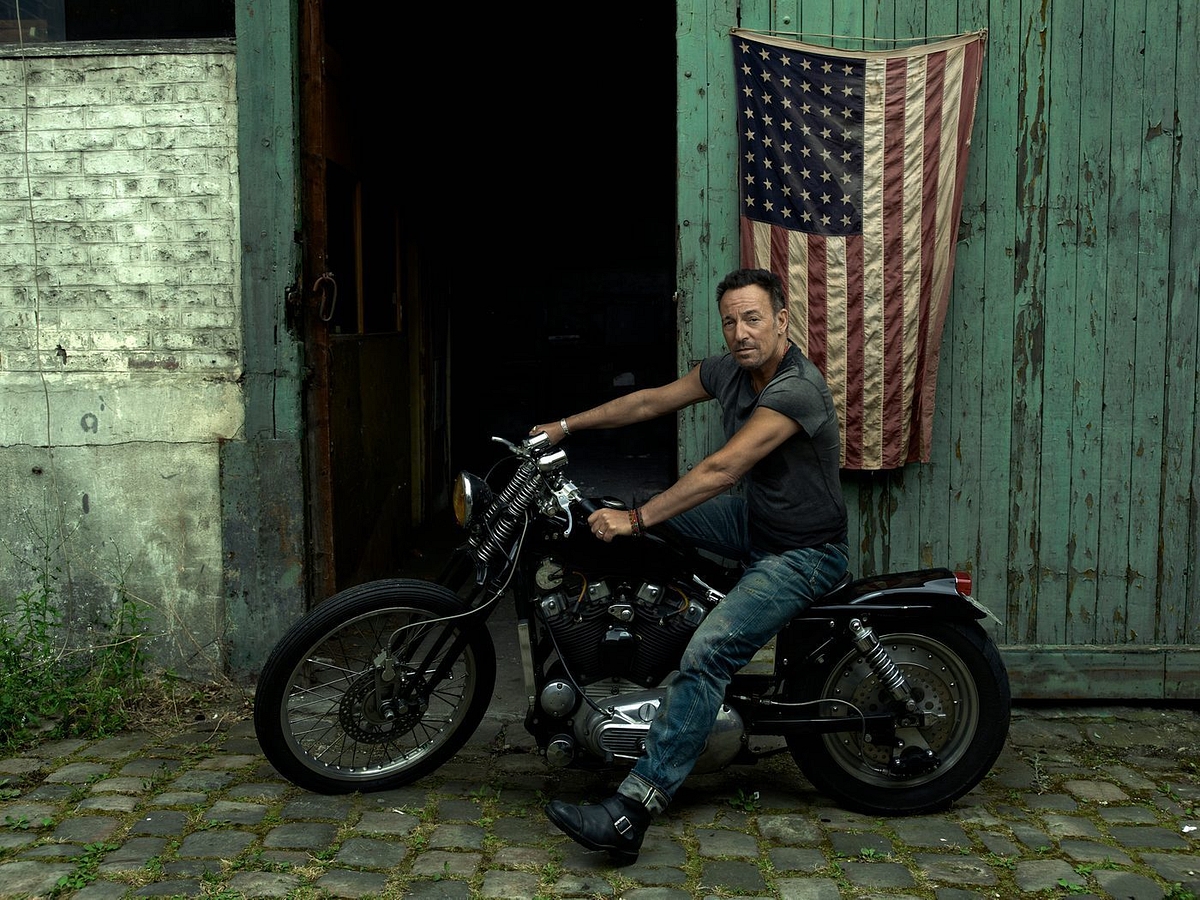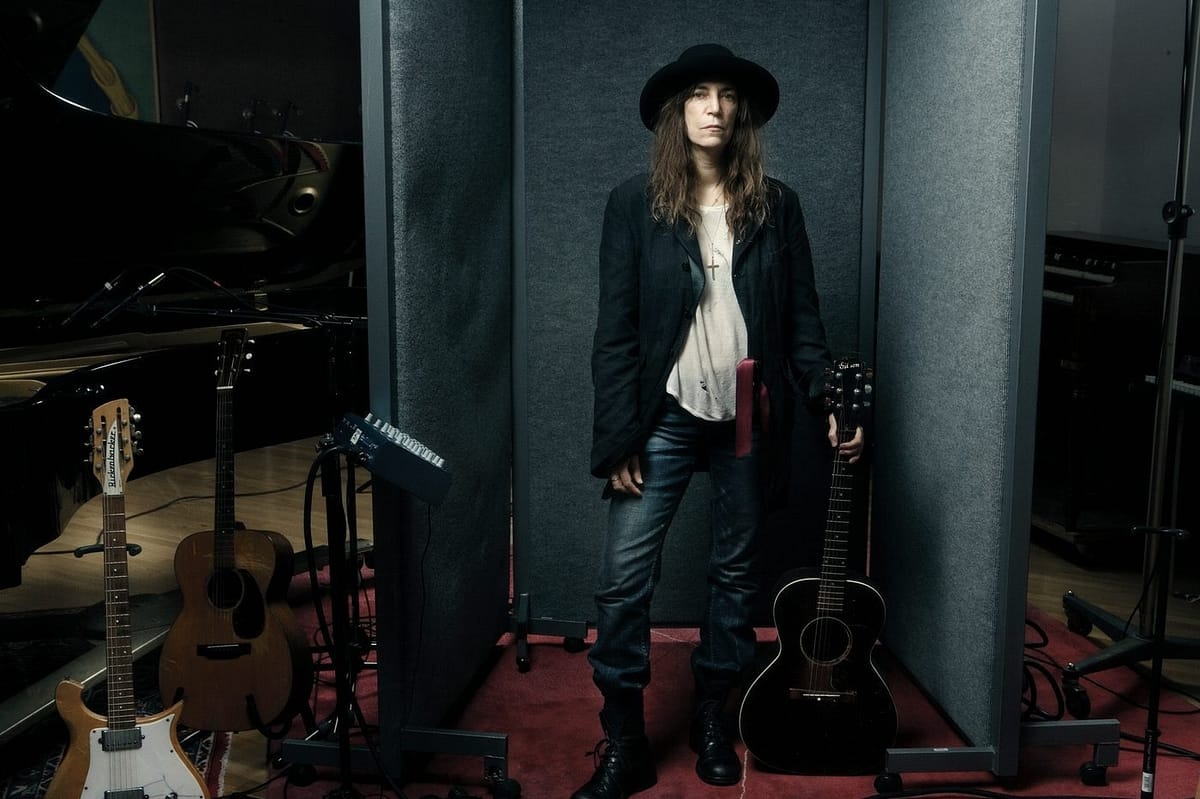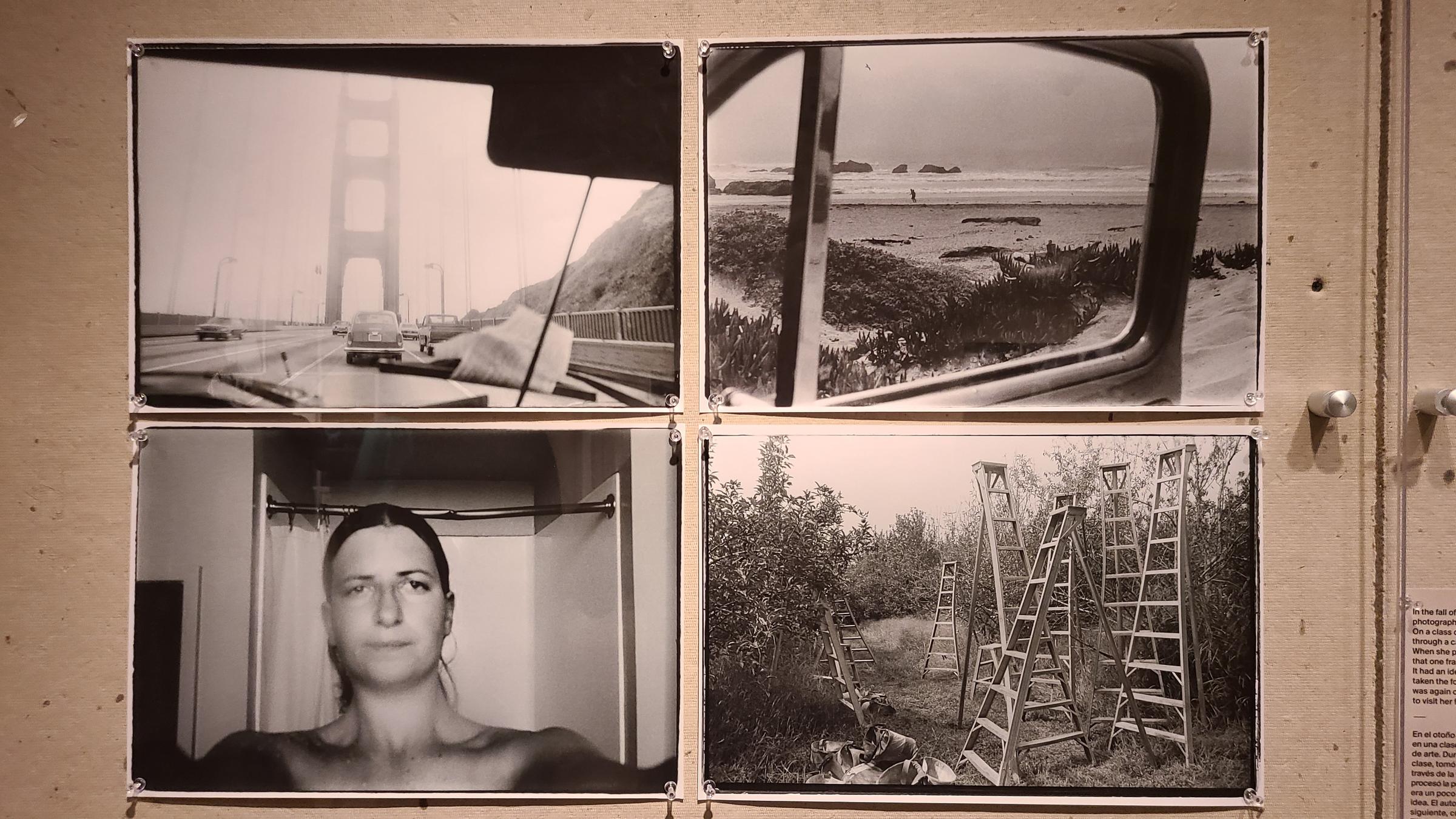
Annie Leibovitz At Work
Crystal Bridges Museum of American Art
Bentonville
Through Jan. 29, 2024
Walking through the photography exhibit Annie Leibovitz At Work at the Crystal Bridges Museum of American Art was like a reverie -– a restless dream with images both familiar and strange flickering through the mind like a newsreel.
The pictures by the former Rolling Stone and Vanity Fair photographer portray a half-century of the cooler, weirder sides of culture and history: A 1975 Rolling Stones tour when the band was fresh-faced and hotel rooms were upended. John and Yoko. Richard Nixon and Dr. Hunter S.Thompson. Susan Sontag. The Dalai Lama. Whoopi Goldberg in a bathtub of milk. Yo-Yo Ma. Condoleezza Rice. Tom Wolfe. Marvin Gaye. A gaunt, godlike Patti Smith during the Horses tour. Air Force One and Apollo 17. Baryshnikov. Pregnant Demi Moore. Miles Davis. Ruth Bader Ginsburg and Sandra Day O’Connor. Bare-chested Arnold Schwarzenegger on horseback. Ken Kesey. The siege of Sarajevo, 1993. Andy Warhol focusing a camera. And a blurred self-portrait of Leibovitz herself.
Annie Leibovitz and her artful style of photojournalism inspired generations of young news photographers. Rolling Stone set the tone for alternative newspapers like NYC’s Village Voice and dozens of imitators across the country. The alt-weeklies spoke to an underserved youth culture interested in music, politics, and literature. These tabloid papers encouraged – or at least tolerated – ever more creative approaches to news photography.
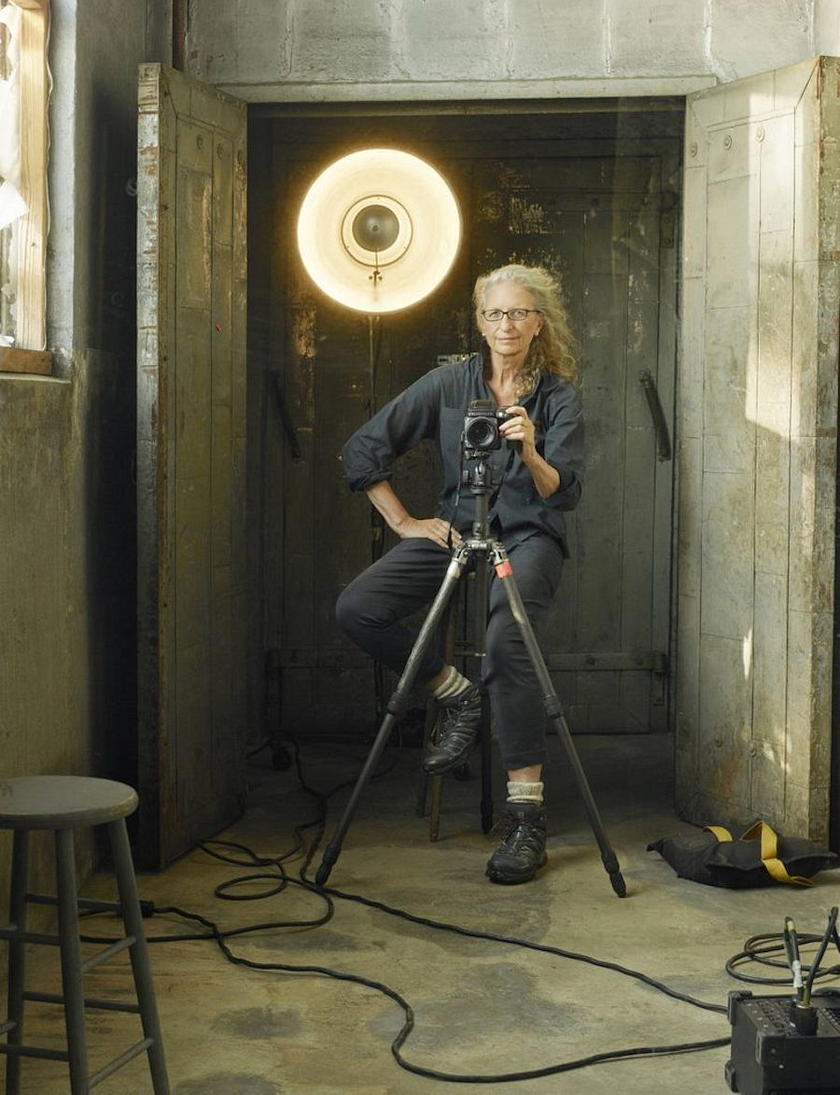
Photojournalists of the alt era lugged camera bags weighing upwards of 20 pounds: Lenses for every situation, flashes and extra batteries, light meters, spare camera bodies, tripods and motor drives. The job sometimes did deliver adventure and glamor, but photographers endured travel, bad weather, early calls, and loud bands.
Annie Leibovitz At Work fills a four-room corner of Crystal Bridges with a thousand or so pictures. The prints are both color and black and white, in various sizes and formats, from snapshots to the ubiquitous 35 millimeter of past decades, and the square images of studio cameras. Multimedia elements include 12-foot video screens displaying a rotation of images.
Some of the images are Polaroid instant pictures (or prints made from them). A caption from another display says that the final film camera Leibovitz used before going completely digital was a Mamiya square-frame camera with a Polaroid back. She’s been experimenting with instant pictures for many years, which says something about her current enthusiasm for cellphone photography.
“Lately I’ve been taking my pictures with an iPhone,” said Leibovitz when I spoke with her at a Bentonville lunch spot. She praised the Apple device’s high image quality and automatic features like focus and picture stabilization.
I lamented that cheap automatic cameras have led to a workplace practice where reporters for smaller publications are expected to also take the photos for their stories. It’s more work, and the pictures usually aren’t as good without a pro photographer along. I said that I miss the collaboration with photojournalists to create compelling packages of words and pictures.
Leibovitz replied that she prefers to work alone with subjects, without a writer in the room. The one-on-one approach helps her gain people’s confidence -– reassuring them to allow the photographer into their personal space, pose for portraits, and even permit candid shots.
Leibovitz’s method for relating to her subjects is probably akin to what reporters use when writing personality profiles. They must persuade the subject, quickly, that they are sympathetic enough to not publish anything that will embarrass the subject or damage his or her brand -– at least not much!
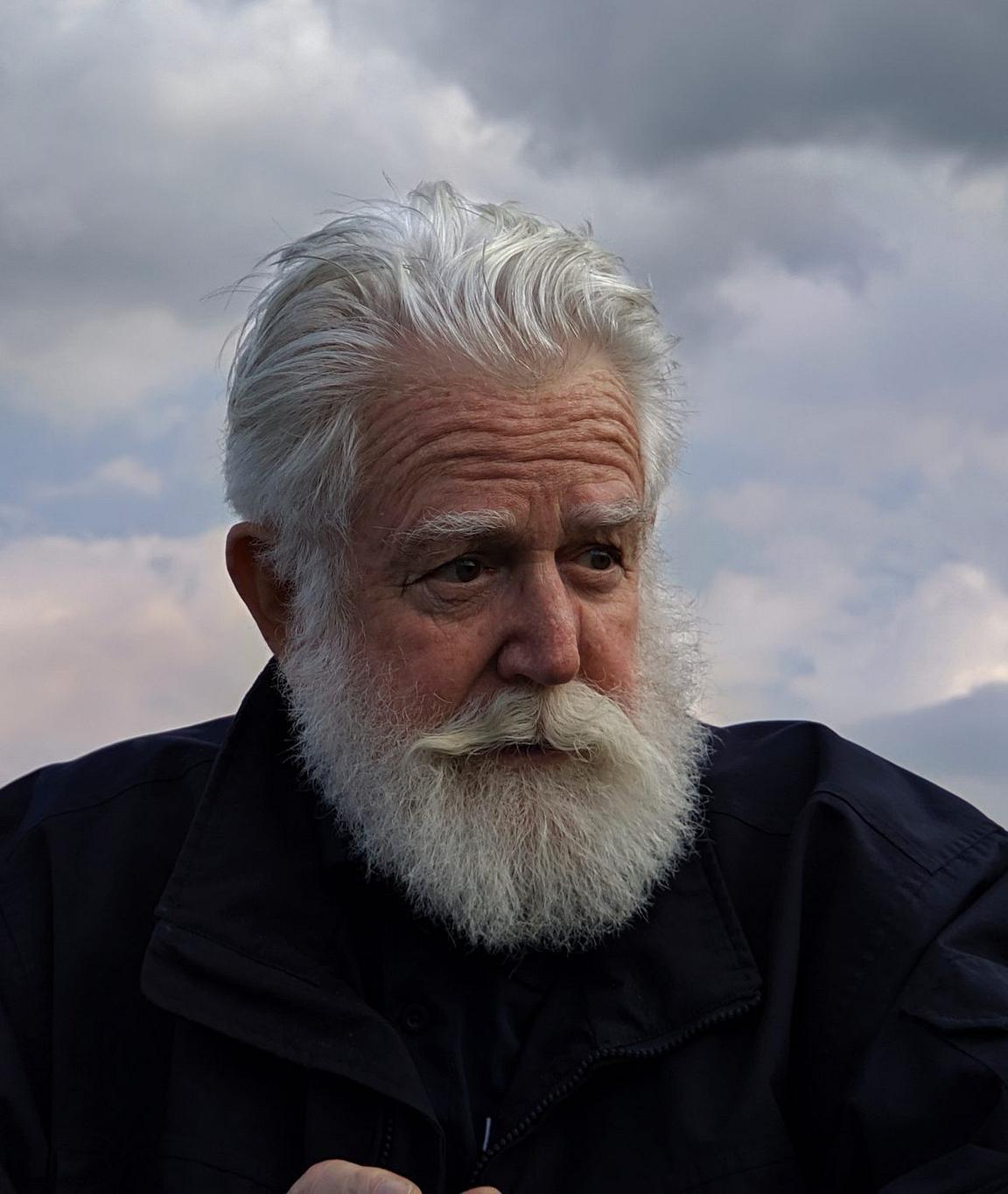
Most visitors will find Annie Leibovitz At Work to be entertaining and accessible, bristling with photos of famous and vaguely familiar faces. Figuring out who’s who is engaging and fun. Black-and-white news photos sometimes have a drama or edginess that can seem lost in today’s high-resolution color photojournalism. However, the show might be even better if it was larger, with blowups of more of the snapshots and additional fashion photos like the ones taken for Vogue.
The Crystal Bridges Museum of American Art, about a mile north of the Bentonville city square, is itself worth seeing, apart from the impressive collections. It’s an architectural wonder by Moshe Safdi with several interconnected turtle-shaped buildings situated on and and around spring-fed ponds in a steep ravine.
Some time ago, Leibovitz photographed Crystal Bridges founder and Walmart heir Alice Walton. The two reportedly got along, which led to the current exhibit. The show includes 25 new photos commissioned by the museum, featuring people and things of the past decade.
In 2007, Leibovitz visited Buckingham Palace for pictures of Queen Elizabeth II. The photographer’s attempts to schmooze the subject fell short this time. Words were reportedly exchanged about the queen’s wearing of a bejeweled tiara. Nonetheless, the photo series came out as another typically fine job, though with Lilibet appearing mildly annoyed in a couple of shots.
After decades of traveling the world, Annie Leibovitz might still be most at home photographing a singer with windblown tresses driving a convertible on the Pacific Coast Highway.
“Annie Leibovitz At Work” continues through Jan. 29, 2024, at Crystal Bridges, then will tour museums in Charlotte, Sacramento, Nashville and Wichita.

